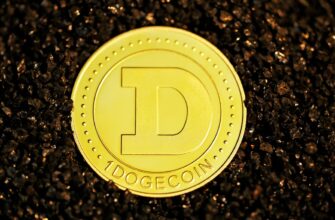🚀 USDT Mixer — Ultimate Privacy, Zero Hassle
Take full control of your USDT TRC20 transfers with our secure mixing service. 🧠
No registration. No personal data. Just clean, private transactions 24/7. 🌐
Transparent fees starting from only 0.5%.
## Introduction: The Pulse of Bitcoin’s Scarcity
Every four years, the Bitcoin ecosystem holds its breath as a programmed event called “halving” approaches. This automatic reduction in new Bitcoin rewards has historically reshaped markets and fueled bull runs. Understanding Bitcoin halving countdown history reveals patterns of anticipation, volatility, and long-term value growth that define crypto’s most pivotal moments.
## What Is Bitcoin Halving? The Core Mechanism
Bitcoin halving is a pre-coded event in Bitcoin’s protocol that slashes miner rewards by 50% approximately every 210,000 blocks (roughly four years). Designed by Satoshi Nakamoto, this deflationary mechanism:
– Caps total supply at 21 million coins
– Gradually reduces new Bitcoin issuance
– Creates predictable scarcity events
Halvings continue until around 2140 when the last Bitcoin is mined. Each countdown triggers intense speculation about supply shocks and price trajectories.
## Historical Halving Events: A Timeline
### First Halving: November 28, 2012 (Block 210,000)
– Reward drop: 50 BTC → 25 BTC
– Pre-halving price: ~$12
– 12-month post-halving peak: $1,150 (9,500% increase)
Market context: Bitcoin’s first major scarcity test amid growing exchange infrastructure.
### Second Halving: July 9, 2016 (Block 420,000)
– Reward drop: 25 BTC → 12.5 BTC
– Pre-halving price: ~$650
– 18-month post-halving peak: $20,000 (2,900% increase)
Key catalysts: Mainstream exchanges expanded; initial institutional interest.
### Third Halving: May 11, 2020 (Block 630,000)
– Reward drop: 12.5 BTC → 6.25 BTC
– Pre-halving price: ~$8,700
– 18-month post-halving peak: $69,000 (690% increase)
Unique factors: COVID-19 market chaos, unprecedented fiscal stimulus, and DeFi boom amplified effects.
## The Psychology of Halving Countdowns
As halvings near, markets exhibit predictable behaviors:
– **Pre-countdown accumulation**: Smart money builds positions 6-12 months prior
– **Media frenzy**: Mainstream coverage peaks as countdown clocks hit <100 days
– **Post-halving "lag effect"**: Prices typically surge 12-18 months after the event
Historical volatility patterns:
1. Short-term dips around halving day (profit-taking)
2. Extended consolidation phases
3. Parabolic rallies fueled by reduced sell pressure from miners
## Why Halving Countdowns Matter for Investors
### Supply Shock Dynamics
– Daily new Bitcoin supply drops by 50% overnight
– Historically overwhelms demand, driving prices up
### Miner Economics Reset
– Less efficient miners shut down, strengthening network security
– Hash rate fluctuations create buying opportunities
### Macro Cycles Acceleration
Halvings synchronize with broader market cycles:
– 2012: Kickstarted crypto's first bull market
– 2016: Catalyzed ICO boom
– 2020: Fueled institutional adoption wave
## The Next Halving: April 2024 (Projected)
– Block target: 840,000
– Reward reduction: 6.25 BTC → 3.125 BTC
– Key differences from past events:
– Mature derivatives markets
– Spot ETF participation
– Global regulatory frameworks
– Potential scenarios based on historical patterns:
– Pre-halving rally (Q4 2023 – Q1 2024)
– Post-halving all-time highs by late 2025
## Beyond 2024: The Long-Term Countdown
Future halving projections:
– 2028: Reward drops to 1.5625 BTC
– 2032: Reward drops to 0.78125 BTC
– 2140: Final Bitcoin mined
As block rewards diminish:
– Transaction fees will dominate miner revenue
– Scarcity effects intensify with each cycle
– Price discovery becomes increasingly volatile
## Frequently Asked Questions (FAQs)
### How often do Bitcoin halvings occur?
Approximately every four years, or after every 210,000 mined blocks.
### Why does the halving date vary?
Block times average 10 minutes but fluctuate. Halvings occur when the target block height is reached, not on a fixed calendar date.
### Do prices always rise after halvings?
Historically yes, but with varying magnitude. External factors like regulations and macroeconomics significantly influence outcomes.
### How do miners survive reward reductions?
Efficient operations profit via:
– Lower energy costs
– Advanced hardware
– Transaction fee revenue (growing post-2030)
### Can halvings be changed or stopped?
No. The mechanism is hardcoded into Bitcoin's protocol, requiring near-impossible consensus to alter.
## Conclusion: History as a Guide, Not a Blueprint
Bitcoin halving countdowns have consistently acted as catalysts for market transformation, weaving scarcity into the asset's DNA. While past patterns suggest explosive growth phases follow each reward reduction, investors must navigate evolving variables—from ETF flows to global adoption. As the 2024 halving approaches, understanding this 15-year history provides context, but never certainty, in crypto's most anticipated event.
🚀 USDT Mixer — Ultimate Privacy, Zero Hassle
Take full control of your USDT TRC20 transfers with our secure mixing service. 🧠
No registration. No personal data. Just clean, private transactions 24/7. 🌐
Transparent fees starting from only 0.5%.








